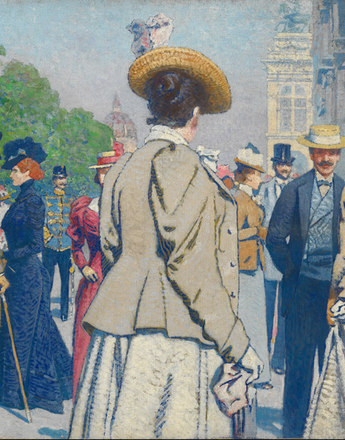An important industrial location – Vienna before the First World War
Vienna’s economy in the years before the outbreak of the First World War was characterised by a combination of traditional small businesses and expanding large modern companies. This applied not only to the industrial sector but also to business-related financial services like banks, insurance companies and company headquarters.
Vienna’s economy underwent a dynamic development in the last decades of the Habsburg monarchy. In contrast to its image as a classic consumer city with a wealthy class providing a large market for luxury goods and personal services, the city was becoming a multifunctional metropolis in which traditional small businesses were being joined increasingly by large industrial companies and financial service providers. In addition, many companies with production facilities outside Vienna had their headquarters in the capital of the multinational empire. According to the census in 1910, 49 per cent of Viennese workers were in industry and manufacturing, 24 per cent in commerce and transport, and 11 per cent in the public and self-employed sector. A further 14 per cent worked as domestic servants or day labourers and 1 per cent in agriculture.
Vienna was therefore well placed as an industrial location at the start of the war. Together with the neighbouring industrial region in southern Lower Austria, it was the economic heart of the Danube monarchy, with a per capita income comparable with that of other European industrial cities. Apart from its supraregional functions in the wholesale, transport and credit sectors, the urban economy had a wide spectrum of skilled and qualified workers offering further advantages as a modern industrial manufacturing location. Following the industrialisation of the 1890s, a number of large companies had settled in the outer districts, now incorporated within the city administration, giving Vienna a genuine factory infrastructure. In the traditional manufacturing zones nearer the centre there were a large number of small businesses supplying the major industries and also taking advantage of the various market niches in the large inner city market. On the eve of the First World War Vienna therefore had a dual system of major industries and small businesses.
The clothing, metalworking and mechanical engineering industries, including some major armaments companies, expanded considerably after the turn of the century, more so than other industrial regions in the monarchy. Light industry, particularly the electrical engineering and chemical industries, were also becoming central to Vienna’s production capability.
Translation: Nick Somers
Good, David F.: The Economic Lag of Central and Eastern Europe: Income Estimates for the Habsburg Successor States, 1870-1910, in: The Journal of Economic History 54 (1994), 869–891
Good, David F./Ma, Tongshu: New Estimates of Income Levels in Central and Eastern Europe, 1870-1910, in: Baltzarek, Franz/Butschek, Felix/Tichy, Gunter (Hrsg.): Von der Theorie zur Wirtschaftspolitik – ein österreichischer Weg. Festschrift für Erich Streissler, Stuttgart 1998, 147–168
Kunze, Otto: Industrie und Gewerbe, in: Paul, Martin (Red.): Technischer Führer durch Wien, Wien 1910, 559–597
Meißl, Gerhard: Im Spannungsfeld von Kundenhandwerk, Verlagswesen und Fabrik. Die Herausbildung der industriellen Marktproduktion und deren Standortbedingungen in Wien vom Vormärz bis zum Ersten Weltkrieg, in: Banik-Schweitzer, Renate/Meißl, Gerhard: Industriestadt Wien. Die Durchsetzung der industriellen Marktproduktion in der Habsburgerresidenz (Forschungen und Beiträge zur Wiener Stadtgeschichte 11), Wien 1983, 99–187




